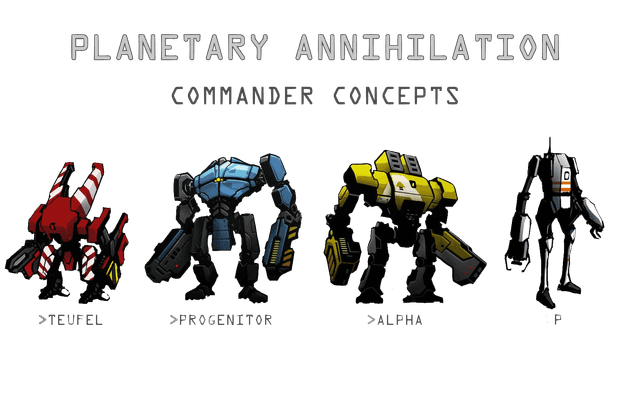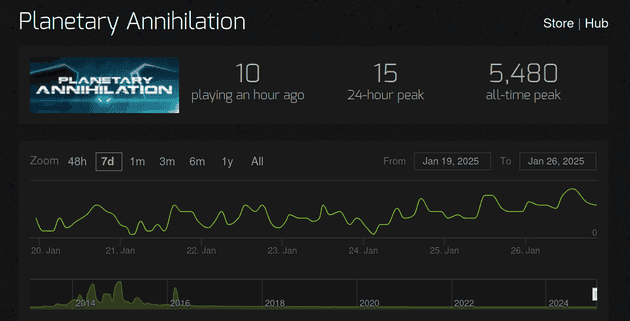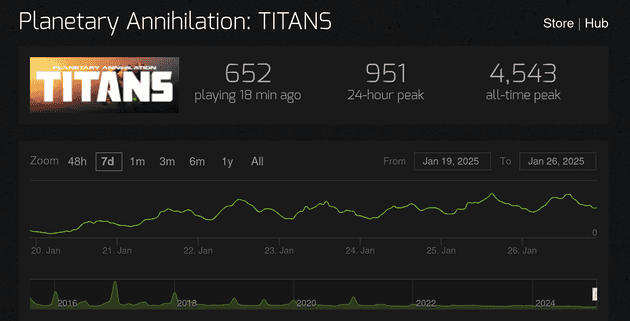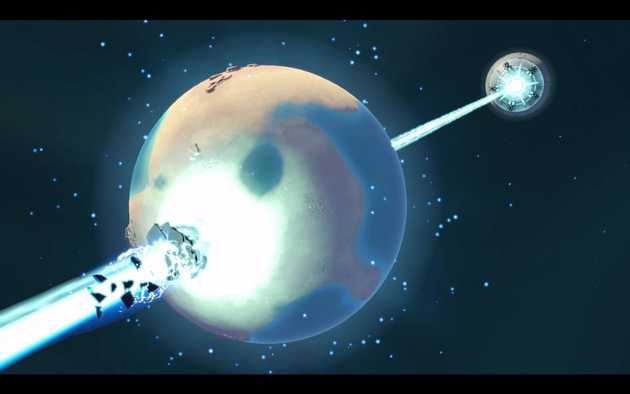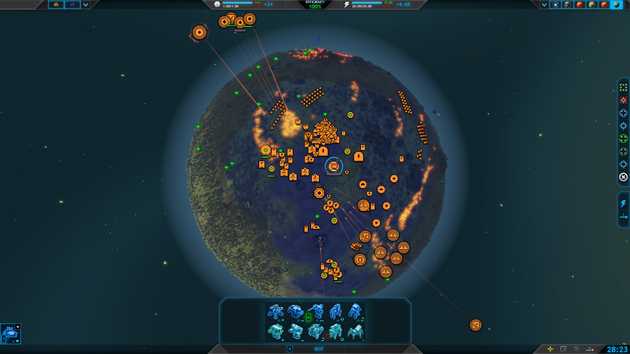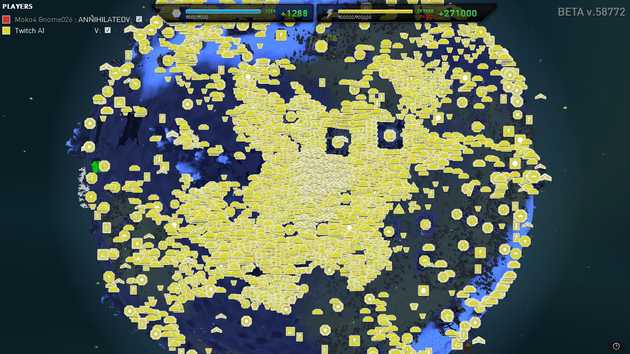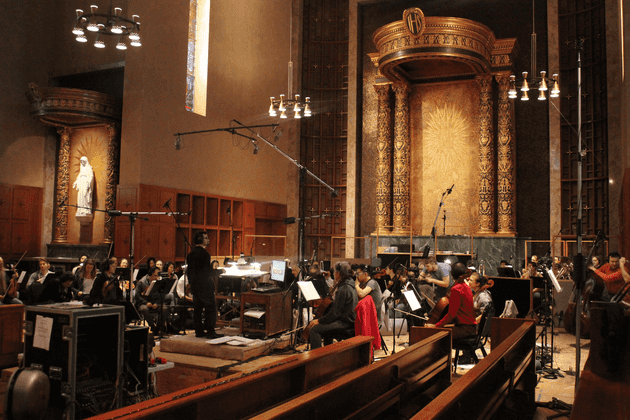One summer day in 2012, I skipped gleefully after a date with a girl from my high-school class. The date had gone well, but it wasn’t the only thing I was looking forward to that day. Realizing I needed to hurry, I freed my bicycle and mounted my great steed—I had a live stream to catch. It was a developer update for my favorite new game: Planetary Annihilation.
Backing a game
One day as I browsed the web, perhaps on Reddit or YouTube, I came across something unlike I’d ever seen before.
It was the height of the kickstarter mania. Everyone and their dog were raising money for coffee shops, movies, and even VR headsets. In the midst of this, I learned about Planetary Annihilation – a real time strategy game where multiple players battle over entire solar systems. The trailer was filled with battling tanks, fields of factories, and even interplanetary rockets. In one last culmination of epicness, the trailer ends with the player smashing an asteroid into the enemy planet.
Begging my parents for the money, I purchased an early access key for the beta. I remember playing for hours, dozens of multiplayer games, and even making and publishing my own maps. I wonder how the game is doing now…
While that’s far from the thriving community it once had, the story doesn’t end there.
There is a sequel
Although the original game is not doing as well as it has in the past, the story is not so simple. After I stopped playing in 2015, there was a sequel that seems to be doing much better today.
Regardless, I never played the sequel - so I can’t really talk about it.
Things I liked
The scale of PA was unrivaled. There were bipedal robots, tracked vehicles, airplanes and even naval units! The variety was stunning. Players could battle across entire solar systems – with multiple biomes and planet types available. One player could be on a Lava planet, another on an Earth-like body. Each would build up their armies and begin conquering other planets and moons in the system. The battles were truly epic.
Screenshot from Samurai on Steam
Above, you can see one of the multiple planet killing technologies in the base game. On certain maps, players could hack deathstar-esque planets and fire interplanetary killer beams. There was nothing in this game done small.
Go big or go home would be an apt subtitle for PA. I loved how silly and fun it was. What other game lets you kamikaze asteroids into your friend’s base? Or shoot giant space lasers? As a child with an often over active imagination, I vividly remember day dreaming of all the cool and interesting features I saw in the trailer.
Unlike many failed kickstarters, PA did the impossible. It actually implemented all the crazy ideas from the trailer. Where many failed, PA actually delivered. Unfortunately, PA proves that just because a game has all the cool features, doesn’t mean that it will be a guaranteed hit.
But there were problems
While the game didn’t lack epicness, it did lack consistent pacing. Sometimes games would be perfect, there would be a clear beginning, middle and end. However, depending on the map, games might go half an hour without any contact between players. Some games would start players on different continents or even planets. This made it hard for players to easily get to each other. Because getting to space required the player to make a significant time and resource commitment, it was hard to get to the interplanetary conflict before the end game.
Space is Hard
Source: https://scientificgamer.com/thoughts-planetary-annihilation/
If players were on the same planet, then it was very easy to pace out the game. They would each build tier 1 units, do some scouting, skirmish as they build out more units. After some time, they would begin creating tier 2 factories. This would escalate the game with more powerful units. After a while, one player would build enough units or nukes (of course there are nukes) to overwhelm their opponent. The game would finally end after the enemy commander was eliminated. However, at no point did these hypothetical players really take advantage of the space aspect of the game. You could invest resources in to some limited space capabilities. However, if you overcommit, then the other player may be able to exploit weaknesses in your planet bound defenses.
On the other hand, if the players started on different planets, then conflict would pace out much slower. You would need to first tech up to tier 2 - building out resource extractors and power generators. After your economy was sufficient, you could start constructing orbital launch pads. You would then need to build your engineering, transport, and escort units. At this point, you may be fifteen or twenty minutes into a game. If the map has some empty planets, it might be worth sending your units there first. If the other player got their first, then congrats – all those units built are now dead!
In practice, it was very hard to balance the game. There were too many different domains: ground, space, air and naval. Each of these domains needed to have good map design and unit variety in order to be useful. A planet covered in small ponds is almost useless for naval units, while planets dotted with small islands negate any advantage for terrestrial vehicles. Did you forget to build umbrellas – an anti orbital weapons? Then you are going to be devastated by that orbital bombardment your opponent just launched. There was simply too much going on for players to keep track of and the developers to balance.
The Camera
From Moko4 on steam
In a traditional RTS, there’s a giant rectangular map. It’s easy to know where you are in relation to any other unit. In Planetary Annihilation, flat-earthers be damned, everything takes place on a globe. While it was cool to navigate around the planets, it was very easy to get lost. Go over the north or south pole, and now the planet is upside down. When selecting a unit, are you trying to click on that engineer on the ground, or the orbital fighter above it? Did you leave those factories on the main planet, or any of those many moons? From what I remember, the main take away from PA is that 1 on 1 games are mostly impractical outside of a single planet. If you want to fight over entire solar systems, then you’re better off playing with friends.
But The Memories
It’s very easy for me to look back and nitpick. Criticisms are free to give. However, when push comes to shove, I do not regret my time with the game nor the money my parents spent. I had so much fun! I made friends, played many hours of multiplayer games. I tried to join a guild, but school kept me from putting too much time into it. I did ask the guild to create me a profile banner.
Some poor artist made that for me — completely unpaid.
I still think about the first time I used an asteroid against an enemy player. I remember the first time one was used on me as well. Unlike many other Kickstarters from that time period, PA is the only one I remember fondly.
Like a short high-school fling, it was fun while it lasted. I regret nothing.
Confusion
Looking back, Planetary Annihilation was more than a game—it was a glimpse into what gaming could be: ambitious, imaginative, and wildly fun, even if imperfect. It may not have stood the test of time, but it left an indelible mark on my gaming journey.
Ultimately, I was distracted by yet another project - another kickstarter. My time with PA was short, yet memorable. Spending the last few days going back through all the random screenshots was super fun. In the end, Planetary Annihilation wasn’t just a game—it was a bold experiment that taught me to appreciate the beauty of ambition, even if it’s imperfect.
Till next time!
